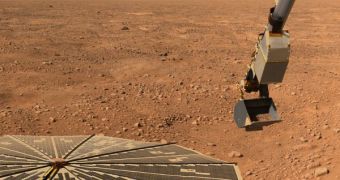Weather, in the strictest sense of the term, does not exist on Mars. The planet is surrounded by nothing more than an extremely thin atmosphere, which is about one percent as thick as our own. In spite of that, freezing temperatures, clouds, and dust storms like nothing seen on Earth exist there, and all these events have their own influence on Mars. Now, Istvan Szunyogh, a Texas A&M professor of atmospheric sciences, has won a NASA grant that provides him with everything he needs to analyze the Martian weather and also come up with predictions on it.
“Planet-encircling Martian dust storms, which occur every two to four Mars years, can cover the whole planet with dust for months,” the expert says. For the new investigation, he will collaborate with other scientists from the University of Maryland, as well as with colleagues from the Geophysical Fluid Dynamics Laboratory in Princeton, New Jersey. The experts explain that, even though Mars is the most Earth-like planet we know, it is still fairly different. For starters, temperatures at the poles can reach lows of -140°C (-220° Fahrenheit) on the Red Planet, which, experts agree, it's pretty chilly.
Additionally, while the other planet indeed has ice caps, they have nothing in common with the Earth-based ones, except maybe their geographical disposition. On Mars, the polar caps are made of frozen carbon dioxide, or dry ice, whereas, on our planet, they are made up of water-ice. “Martian weather forecasts, in the short term, can drastically increase the safety of landing robotic exploration missions. In the long run, it is indispensable for the safe returning of astronauts in future manned explorations,” Texas A&M Professor of Atmospheric Sciences Mark Lemmon comments.
“All weather forecasts, including those on TV, are based on model forecasts of the different physical parameters of the Earth's atmosphere such as temperature, wind and pressure. The main goal of our project is to explore the possibility of obtaining accurate quantitative estimates of these parameters of the Martian atmosphere. These parameters will be obtained from the available remotely sensed Martian observations. Then the data can be fed into Mars global circulation models, producing Martian weather forecasts like what we have for Earth,” Szunyogh concludes.

 14 DAY TRIAL //
14 DAY TRIAL //